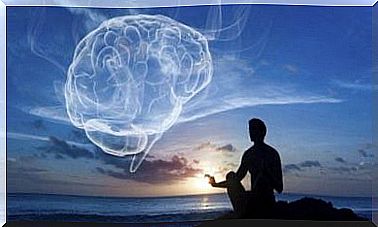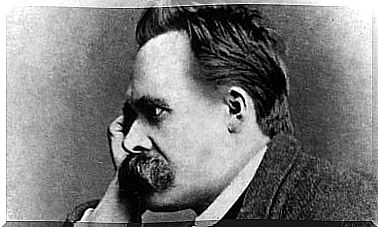The Role Of Physical Attraction

There are many theories about the role of physical attraction in love and relationships. Many of these theories focus on the beginning of a relationship. It is also a widely studied concept in the psychology of social cognition, where experts have conducted numerous studies and research projects.
It should be noted that we work with a narrow definition of attraction. In some cases, like friendships, it can go hand in hand with affinity, but that’s not what we focus on. While it may sound hard to believe, it’s also possible to be in a relationship where you’re not attracted to the other person.
Researchers such as Surra and Milardo (1988) identify two types of human relationships. First, there are interactive networks, where we work together to achieve our own goals.
In addition, there are psychological networks where we feel connected and important with other people. In these types of relationships, our bonds go beyond just achieving goals.
Attraction clearly falls into the category of psychological networks. Looked at this way, attraction is a natural tendency to form a relationship with someone, interact with that person and respond positively to his or her actions and suggestions.

Feingold and physical attraction
Other researchers, such as Feingold (1990) decided to study the role of physical attraction in entering into a relationship. He had five methodological tools for his research:
- Scaled questionnaires. Subjects had to rate several characteristics that they consider important in a potential partner. One of the attributes on the questionnaire was physical attraction.
- An investigation of correlations between physical attraction and popularity.
- Blind dates, where they mastered the levels of physical attraction and the interactions they had.
- Incorrect physical descriptions of future colleagues to measure the positive or negative tendencies that the subjects then had about them.
- An analysis of the content of personal ads in newspapers.
His goal was to see if beauty played a role in our evaluations of other people. The answer was yes. He found that men valued physical attractiveness more than women. But wait, it’s more complicated than that! He also found that the difference was only greater in their subjective reactions and not in their behavior.
What this means is that there seem to be differences between what the subjects said they were looking for in a partner and who they eventually became interested in. However, this may have been influenced by social lust and the stereotypes surrounding physical attractiveness in our society.
Romantic and platonic encounters
In the same study, Feingold also found that more attractive women had more romantic dates. Attractive men, on the other hand, had a higher platonic popularity. In other words, they had more female friends.
What this might suggest is that in terms of romantic interactions, physical attractiveness to men is more important. At the same time, when it comes to friendships, the beauty of a person is more important to women.
Physical attraction, money and generosity
Another study by Hamermesh and Biddle (1998) shows that there is a connection between money and material things and physical attraction. In short, people who were less physically attractive earned less money than people who scored higher in physical appearance, regardless of gender or occupation.
Eagly (1991) examined the importance of physical appearance within the framework of psychological constructs such as social ability, intelligence, integrity and altruism.
She found a direct relationship between attractiveness and social ability. This may have to do with the fact that these people had an easier time entering into relationships or being accepted.
She also found a relatively strong relationship between intellectual ability and attractiveness. Finally, she found no significant relationship between generosity, integrity, and attractiveness.
Sociobiology may have the answer
The influence of appearance on attraction and mate choice has also been studied. Things were found regarding the investment of both men and women in procreation.
A desire for your genes to pass for generations to come is the basis of attraction between one person and another. That attraction comes from things beyond the physical appearance.
According to evolutionary theories, attraction to a woman is related to signs of reproductive health. This is strongly related to youthfulness and beauty. As for the attraction to men, the most important quality is the ability to defend their children. In other words: domination.
Sociobiology and prototypes of universal beauty
Our prototypes of universal beauty seem to support the psychobiological theory that we associate feminine beauty with youthfulness and motherhood. Some things that would convey this are:
- big eyes and mouth
- a small nose
- big boobs
- wide hips
For men, this is a wide jaw and strength.
But as we said before and especially in the case of men, the traits are not just physical in terms of sociobiological attraction.
A study conducted by Jensen Campbell showed that the biggest facet of attraction for people interested in men was not those who were most physically dominant, but those who helped other people.
The Parasite Theory and the Role of Mass Media on Physical Attraction
Gangestad and Buss (1993) presented the parasite theory. They studied the role of physical attraction in 29 different cultures. They found that in places where more people contract pathogenic parasites, physical attraction is much more important.
This would be the case because people associated physical attractiveness with a strong immune system and resistance to disease. Looking in a completely different direction, for example, Feingold said that mass media can play a big role when it comes to what we find attractive.
He argued that myths like “What’s beautiful is good” have stuck because they’re so common in movies and TV. Just think about it: you see attractive, kind-hearted, strong heroes who have everything you could want in a partner.
Our tendency to generalize things may have led us to apply that correlation between attractiveness and good character to all sorts of other contexts.
This makes many of us victims of a fundamental attribution error where we assume that attractive people are more successful, without having anything else to back it up.
We think there must be a connection between physical attractiveness and good personality traits. However, the truth is that these things certainly have more unstable, external causes.

A self-fulfilling prophecy
So we assume that attractive people are competent and good and act on that assumption. You meet someone who is capable or good and you want to maintain a reciprocal balance: you want to be good enough for this successful person.
But if you give all this to someone, it can cause a reaction in this person and he will be prone to the same behavior. This is known as a self-fulfilling prophecy.
If you associate with someone who is not successful and unintelligent, someone you generally consider unworthy, you have a very different attitude towards this person. Your attitude will also influence the other person’s reaction. If you go into something with very negative expectations, you are more likely to be right.
In conclusion, it seems that physical attraction plays an important role in developing relationships. However, it is clearly not the only important factor. Researchers have also explored other things, such as what we have in common with the other person or how familiar they feel with each other.









